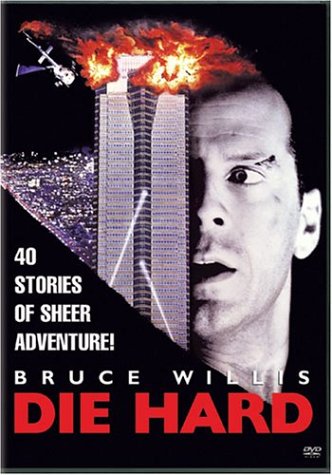Saturday, 30 October 2010
Wednesday, 13 October 2010
JT - My Five Fave Films
1. Shawshank Redemption (Frank Darabont, 1994) Budget: $25,000,000 US Box Office: $28,341,469 UK Box Office: £2,344,349
I like this film because it's a general great film, and makes you realise what it was like in jail back in those days.
The Trailer
2. Die Hard (John Mctiernan, 1988) Budget: $28,000,000 US Box Office: $80,707,729 UK Box Office: £2,975,086
I like this film because it's a good action film and really makes the action scenes tense but it also is a good film to watch. 3. The Bourne Identity (Doug Liman, 2002) Budget: $60,000,000 US Box Office: $121,468,960 UK Box Office: £7,717,876
3. The Bourne Identity (Doug Liman, 2002) Budget: $60,000,000 US Box Office: $121,468,960 UK Box Office: £7,717,876I like this film because it's a film that you don't know what is happening, your like the character because he (Jason Bourne) doesn't know where and who he is. It's also a good action film.
 4. Inception (Christopher Nolan, 2010) Budget: $160,000,000 US Box Office: $288,405,376 UK Box Office: £35,264,403
4. Inception (Christopher Nolan, 2010) Budget: $160,000,000 US Box Office: $288,405,376 UK Box Office: £35,264,403I like this film because it's a real brain teaser. It's one of the best films you could watch, its very complicated which I like because it keeps you guessing and there is a good twist at the end.
 5. The Last Song (Julie Anne Robinson, 2010) Budget: Low budget film US Box Office: $62,933,793 UK Box Office: £1,931,718
5. The Last Song (Julie Anne Robinson, 2010) Budget: Low budget film US Box Office: $62,933,793 UK Box Office: £1,931,718I like this film because it's a nice film. It is quite a sad film but that is the element which makes it likable, it can relate to some viewers and also shows the "love" stereotype.
Monday, 11 October 2010
JT - My Coursework Task
THE BRIEF, EVALUATION + HOW ITS ALL MARKED
The coursework is worth 50% of the AS (same at A2) and the marking (detailed later) is divided into 3 sections:
THE BRIEF
Your mission is to carry out the following brief:Preliminary exercise: Continuity task involving filming and editing a character opening a door, crossing a room and sitting down in a chair opposite another character, with whom she/he then exchanges a couple of lines of dialogue. This task should demonstrate match on action, shot/reverse shot and the 180-degree rule.
Main task: the titles and opening of a new fiction film, to last a maximum of two minutes.
All video and audio material must be original, produced by the candidate(s), with the exception of music or audio effects from a copyright-free source.
The coursework is worth 50% of the AS (same at A2) and the marking (detailed later) is divided into 3 sections:
RESEARCH AND PLANNING: 20%
PRODUCTION: 60%
EVALUATION: 20%
Even before I start shooting (let alone planning) my production, I need to keep this final stage in mind. If I start (b)logging notes on this now it will save me a lot of stress as the final deadline (in May!) approaches. I am tasked with answering these questions (see below for details on how this is marked):
When my teacher is marking all this, they have got to write a paragraph for the exam board justifying the marks they have given me. The grid embedded below summarises the criteria they have to follow, and so I'am advised to occasionally re-read this and ask myself where I think I'll fall within the marking scheme!
For each section there are key components of the work which the teacher has to assess as being one of the following:
g
EVALUATION
Even before I start shooting (let alone planning) my production, I need to keep this final stage in mind. If I start (b)logging notes on this now it will save me a lot of stress as the final deadline (in May!) approaches. I am tasked with answering these questions (see below for details on how this is marked):
- In what ways does your media product use, develop or challenge forms and conventions of real media products?
- How does your media product represent particular social groups?
- What kind of media institution might distribute your media product and why?
- Who would be the audience for your media product?
- How did you attract/address your audience?
- What have you learnt about technologies from the process of constructing this product?
- Looking back at your preliminary task, what do you feel you have learnt in the progression from it to the full product?
HOW ITS ALL MARKED [ie THE ASSESSMENT CRITERIA]
When my teacher is marking all this, they have got to write a paragraph for the exam board justifying the marks they have given me. The grid embedded below summarises the criteria they have to follow, and so I'am advised to occasionally re-read this and ask myself where I think I'll fall within the marking scheme!
For each section there are key components of the work which the teacher has to assess as being one of the following:
MINIMAL
BASIC
PROFICIENT
EXCELLENTG321 - Simplified Marking Criteria as 1 Sheet
g
Subscribe to:
Posts (Atom)

